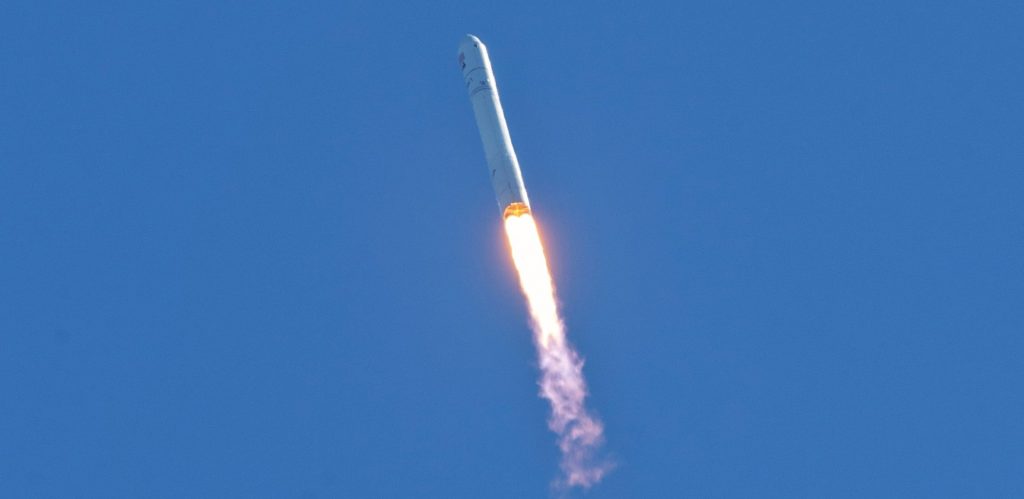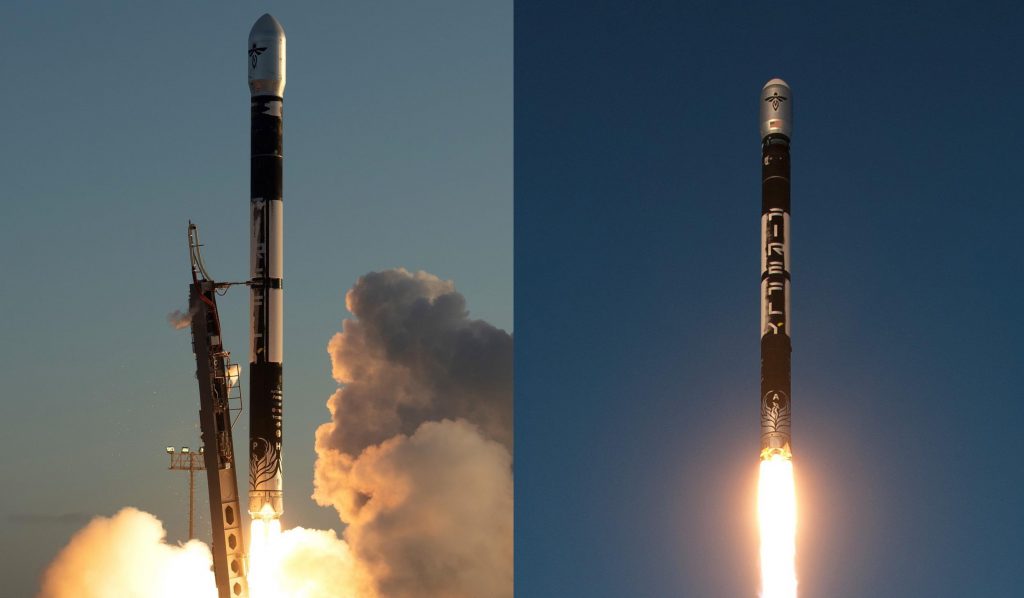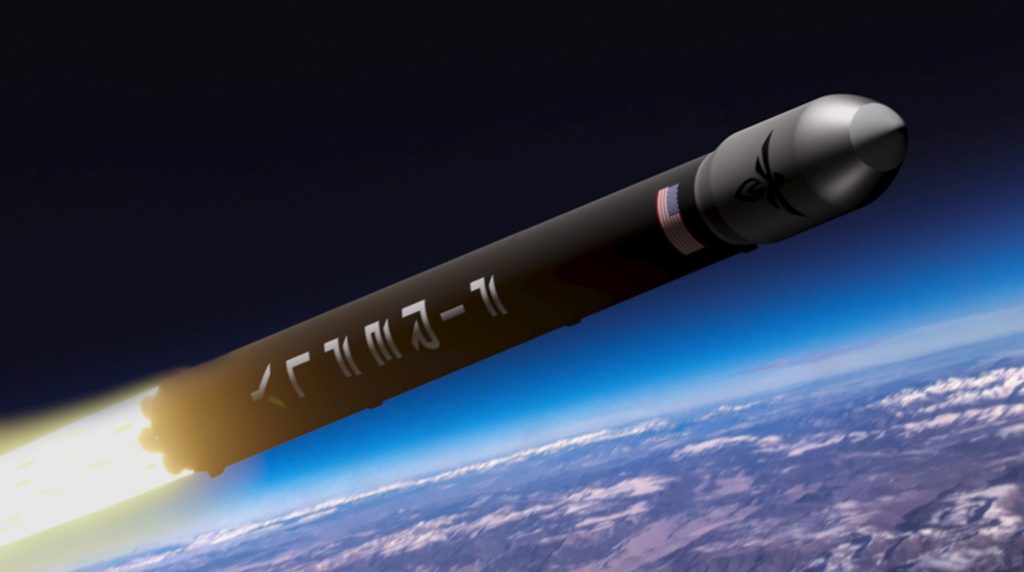

News
Northrop Grumman partners with Firefly and SpaceX to save Antares rocket, launch Cygnus spacecraft
Northrop Grumman has announced plans to partner with startup Firefly Aerospace to save (and upgrade) the conglomerate’s Antares rocket, which it uses to launch Cygnus cargo spacecraft to the International Space Station.
The new and improved Antares 330 rocket could debut as early as late 2024. The existing Antares 230 rocket has just two launches left before a lack of new hardware from crucial Ukrainian suppliers will permanently ground it – a time Northrop Grumman estimates will come as early as spring (Q2) 2023. To fill Antares’ 18-month availability gap, Northrop Grumman says it has purchased three SpaceX Falcon 9 launches to continue Cygnus space station cargo deliveries largely unabated.
In some ways, Northrop Grumman’s decision to purchase alternate launch services from SpaceX is surprising. After Antares suffered a catastrophic failure during an operational Cygnus launch in October 2014, Orbital Sciences chose to purchase three Atlas V launches from the United Launch Alliance (ULA) to ensure continued cargo deliveries while it attempted to return its own rocket to flight. Antares fully took over in 2017 after returning to flight in 2016.
However, seven or so years later, ULA is on the verge of retiring Atlas V and has already sold all remaining Atlas V launch contracts. Meanwhile, its next-generation Vulcan Centaur rocket is years behind schedule and unlikely to debut before 2023, making it extremely unlikely that ULA would have been able to fulfill Northrop Grumman’s desire to preserve its existing Cygnus launch schedule. It’s possible that Vulcan could have gotten the job done, but each Cygnus launch would have likely ended up several months (or more) behind schedule, thus requiring SpaceX and future provider Sierra Nevada Corporation to fill in the space station resource gaps Cygnus would leave.
With the benefit of hindsight and knowing that Antares 330 is unlikely to debut before late 2024 or 2025, it’s clear that SpaceX was the only viable option. Thanks to SpaceX operating in an entirely different universe of launch cadence and availability relative to the rest of the world, the company should have no issue whatsoever substituting a few of the dozens of Falcon 9 Starlink launches likely planned in 2023 and 2024 with Cygnus space station resupply runs.

Northrop Grumman’s decision comes almost four months after Russia’s second illegal invasion of Ukraine, an action that immediately threw the future of its Antares rocket into question. The only major components of Antares-Cygnus Northrop Grumman (through its 2018 acquisition of Orbital ATK) is responsible for building are the rocket’s Castor 30XL second stage and Cygnus’ service module. Cygnus’ silver pressure vessel is built by Thales Alenia Space, the payload fairing is built by RUAG, the Antares booster engines are supplied by Russia’s NPO Energomash, and the Antares booster structures are built by Ukraine’s Yuzhnoye SDO and Yuzhmash.
Now embroiled in an open shooting war begun by Russia, Ukraine’s aerospace industry has been on borrowed time for several months. In July, the Yuzhmash factory was reportedly struck by cruise missiles, killing several people and presumably damaging the facility. Northrop Grumman’s August 8th announcement that it US startup Firefly Aerospace will build a domestic replacement for the Antares first stage all but guarantees that its former Ukrainian partners are no longer able to supply rocket hardware.


The Antares 330 booster Firefly intends to build for Northrop Grumman will be substantially larger and “significantly increase” the rocket’s performance to low Earth orbit (LEO), which currently sits at 8 tons (~17,500 lb). Intriguingly, the booster Firefly will supply appears to be the latest iteration of the first stage of the medium-lift Beta rocket the startup has been working on for some time. According to Firefly’s recently updated Beta webpage, the next-generation rocket is expected to measure 4.32 meters (14.1 ft) wide and 55.7 meters (182.5 ft) tall; produce about 720 tons (1.6M lbf) of thrust in vacuum, and launch up to 13 tons (28,700 lb) to LEO.

News
Tesla starts showing how FSD will change lives in Europe
Local officials tested the system on narrow country roads and were impressed by FSD’s smooth, human-like driving, with some calling the service a game-changer for everyday life in areas that are far from urban centers.

Tesla has launched Europe’s first public shuttle service using Full Self-Driving (Supervised) in the rural Eifelkreis Bitburg-Prüm region of Germany, demonstrating how the technology can restore independence and mobility for people who struggle with limited transport options.
Local officials tested the system on narrow country roads and were impressed by FSD’s smooth, human-like driving, with some calling the service a game-changer for everyday life in areas that are far from urban centers.
Officials see real impact on rural residents
Arzfeld Mayor Johannes Kuhl and District Administrator Andreas Kruppert personally tested the Tesla shuttle service. This allowed them to see just how well FSD navigated winding lanes and rural roads confidently. Kruppert said, “Autonomous driving sounds like science fiction to many, but we simply see here that it works totally well in rural regions too.” Kuhl, for his part, also noted that FSD “feels like a very experienced driver.”
The pilot complements the area’s “Citizen Bus” program, which provides on-demand rides for elderly residents who can no longer drive themselves. Tesla Europe shared a video of a demonstration of the service, highlighting how FSD gives people their freedom back, even in places where public transport is not as prevalent.
What the Ministry for Economic Affairs and Transport says
Rhineland-Palatinate’s Minister Daniela Schmitt supported the project, praising the collaboration that made this “first of its kind in Europe” possible. As per the ministry, the rural rollout for the service shows FSD’s potential beyond major cities, and it delivers tangible benefits like grocery runs, doctor visits, and social connections for isolated residents.
“Reliable and flexible mobility is especially vital in rural areas. With the launch of a shuttle service using self-driving vehicles (FSD supervised) by Tesla in the Eifelkreis Bitburg-Prüm, an innovative pilot project is now getting underway that complements local community bus services. It is the first project of its kind in Europe.
“The result is a real gain for rural mobility: greater accessibility, more flexibility and tangible benefits for everyday life. A strong signal for innovation, cooperation and future-oriented mobility beyond urban centers,” the ministry wrote in a LinkedIn post.
News
Tesla China quietly posts Robotaxi-related job listing
Tesla China is currently seeking a Low Voltage Electrical Engineer to work on circuit board design for the company’s autonomous vehicles.

Tesla has posted a new job listing in Shanghai explicitly tied to its Robotaxi program, fueling speculation that the company is preparing to launch its dedicated autonomous ride-hailing service in China.
As noted in the listing, Tesla China is currently seeking a Low Voltage Electrical Engineer to work on circuit board design for the company’s autonomous vehicles.
Robotaxi-specific role
The listing, which was shared on social media platform X by industry watcher @tslaming, suggested that Tesla China is looking to fill the role urgently. The job listing itself specifically mentions that the person hired for the role will be working on the Low Voltage Hardware team, which would design the circuit boards that would serve as the nervous system of the Robotaxi.
Key tasks for the role, as indicated in the job listing, include collaboration with PCB layout, firmware, mechanical, program management, and validation teams, among other responsibilities. The role is based in Shanghai.
China Robotaxi launch
China represents a massive potential market for robotaxis, with its dense urban centers and supportive policies in select cities. Tesla has limited permission to roll out FSD in the country, though despite this, its vehicles have been hailed as among the best in the market when it comes to autonomous features. So far, at least, it appears that China supports Tesla’s FSD and Robotaxi rollout.
This was hinted at in November, when Tesla brought the Cybercab to the 8th China International Import Expo (CIIE) in Shanghai, marking the first time that the autonomous two-seater was brought to the Asia-Pacific region. The vehicle, despite not having a release date in China, received a significant amount of interest among the event’s attendees.
Elon Musk
Elon Musk and Tesla AI Director share insights after empty driver seat Robotaxi rides
The executives’ unoccupied tests hint at the rapid progress of Tesla’s unsupervised Robotaxi efforts.

Tesla CEO Elon Musk and AI Director Ashok Elluswamy celebrated Christmas Eve by sharing personal experiences with Robotaxi vehicles that had no safety monitor or occupant in the driver’s seat. Musk described the system’s “perfect driving” around Austin, while Elluswamy posted video from the back seat, calling it “an amazing experience.”
The executives’ unoccupied tests hint at the rapid progress of Tesla’s unsupervised Robotaxi efforts.
Elon and Ashok’s firsthand Robotaxi insights
Prior to Musk and the Tesla AI Director’s posts, sightings of unmanned Teslas navigating public roads were widely shared on social media. One such vehicle was spotted in Austin, Texas, which Elon Musk acknowleged by stating that “Testing is underway with no occupants in the car.”
Based on his Christmas Eve post, Musk seemed to have tested an unmanned Tesla himself. “A Tesla with no safety monitor in the car and me sitting in the passenger seat took me all around Austin on Sunday with perfect driving,” Musk wrote in his post.
Elluswamy responded with a 2-minute video showing himself in the rear of an unmanned Tesla. The video featured the vehicle’s empty front seats, as well as its smooth handling through real-world traffic. He captioned his video with the words, “It’s an amazing experience!”
Towards Unsupervised operations
During an xAI Hackathon earlier this month, Elon Musk mentioned that Tesla owed be removing Safety Monitors from its Robotaxis in Austin in just three weeks. “Unsupervised is pretty much solved at this point. So there will be Tesla Robotaxis operating in Austin with no one in them. Not even anyone in the passenger seat in about three weeks,” he said. Musk echoed similar estimates at the 2025 Annual Shareholder Meeting and the Q3 2025 earnings call.
Considering the insights that were posted Musk and Elluswamy, it does appear that Tesla is working hard towards operating its Robotaxis with no safety monitors. This is quite impressive considering that the service was launched just earlier this year.








